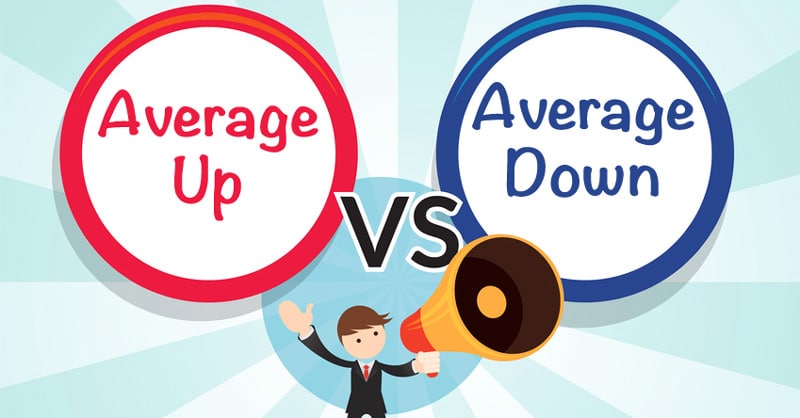Averaging down means buying more when the share price is down. Similarly averaging up means buying more when the stock price has gone up.
Averaging or buying more when there is a change in the share price is a typical action most traders and investors undertake when they trade or invest.
Averaging down means buying more when the share price is down. Similarly averaging up means buying more when the stock price has gone up.
Let us understand both with a simple example.
Average Down
Suresh bought 100 shares of XYZ company at Rs 100 with a view that the price will increase in few days and he will grab the difference as profit. However, soon after his purchase, the stock tumbled to Rs 95 and so he added 100 more to his kitty. The stock went down further to Rs 90 and he bought added 100 more to his portfolio.
Suresh holds 300 shares of XYZ company and though his initial purchase price was ₹100, with the second purchase, the average share price of 200 units that he was holding went down to ₹97.5 and with 300 units, his average purchase price is ₹95. Here Suresh is said to be averaging down his stock holding price.
Average Up
Ramesh bought shares of ABC company at Rs 100 with the same view as Suresh. Soon the stock starts moving and as his target is much higher he adds more at ₹105 mark and then adds again when the stock touches ₹110.
Ramesh holds 300 shares of ABC company and though his initial purchase price was ₹100, with the second purchase, the average share price of 200 units that he was holding went up to ₹102.5 and with 300 units, his average purchase price is ₹105. Here Ramesh is said to be averaging up his stock holding price.
When one should do what?
A trader who averages down the cost of holding assumes that he can make a profit when the price gains. However, average down can be a loser’s game.
When the stock price moves contrary to expectation, a trader may want to average down with the assumption that his initial analysis was correct which can mean trader has an ego for his analysis instead of accepting he was wrong and should re-analyze the facts.
On the contrary a 10% reduce in price with a 10% increase in price will not nullify the losses. Stock trading at ₹100 looses 10% and trades at 90. Now from 90 if the stock gains back 10%, it will only be at ₹99.
Market wisdom says to add more to your winning positions. If a trader is making money in a trade, it makes sense to add more to that position and make more money.
I am still trying to make a move from being a trader to an investor and it is something I need to learn and learn fast.
As a trader, I am always skeptical about averaging down. For an investor, the average down may work out well if he finds good value when the price falls.
In my open portfolio that I shared for 15 months or so, you may not have seen me averaging down any of my investments. Even when Pidilite Industries fell from ₹720 which was my purchase price (Contract notes here) to ₹580 I never added to my position. As an investor in Pidilite Industries, I should have considered averaging down but being a trader for so long, it is something I need to cope up with.




Great article!!
I have a doubt as explained below :
I had purchase X company 1000shares at rs35 and then added 3000 share at rs27 when price fell.
So after the avg price(rs.29),can i get out from just 1rs move up for profit of new (3000 share) if so then does the remaining share(1000) remains at avg price or old price i.e 35.
Regards,
Saurabh
That depends on your accounting and the way you prefer to keep things in the record. If you use LIFO (last in first out) method and FIFO (first in first out) method, the results will vary.
Whatever it is, the idea shouldn’t be to profit from the same stock and one can always use the profits of other stock to book losses in a wrong stock (just in case you consider this as wrong.)
I’m glad to read your reply!!
Few things i want to know what if I use lifo, will the avg price remain 35 or 29 for remaining shares.
And
I agree with your last point that one should always exit from wrong stock with the profit.
This depends on how you like to keep them in the records. Ideally the accounting doesn’t have an average price and it is all per unit profit or loss booked.
So with LIFO, the last purchased units are sold for a profit and others are at the purchased price.
Very good explaination by you with example. Tough I fully agree with you , I am not able to follow this rule some times. I will try to follow this.